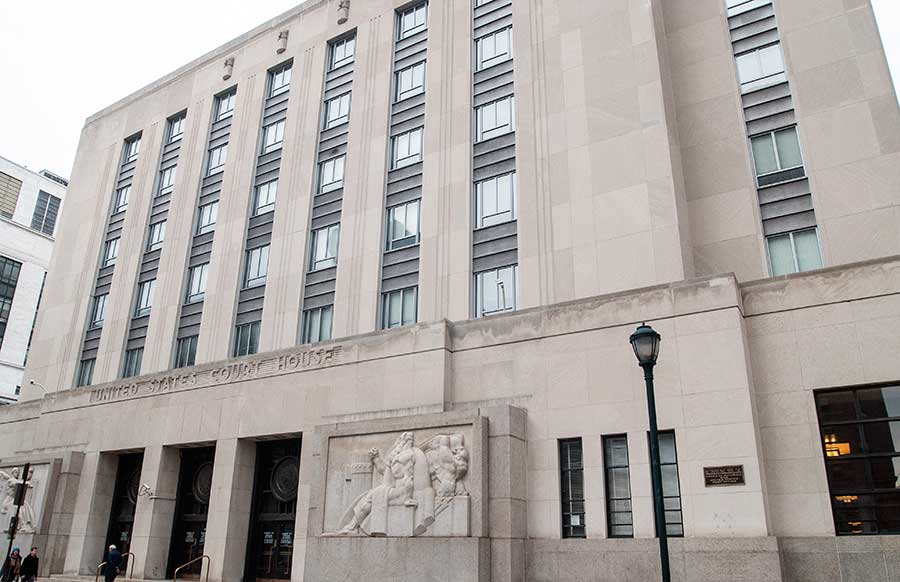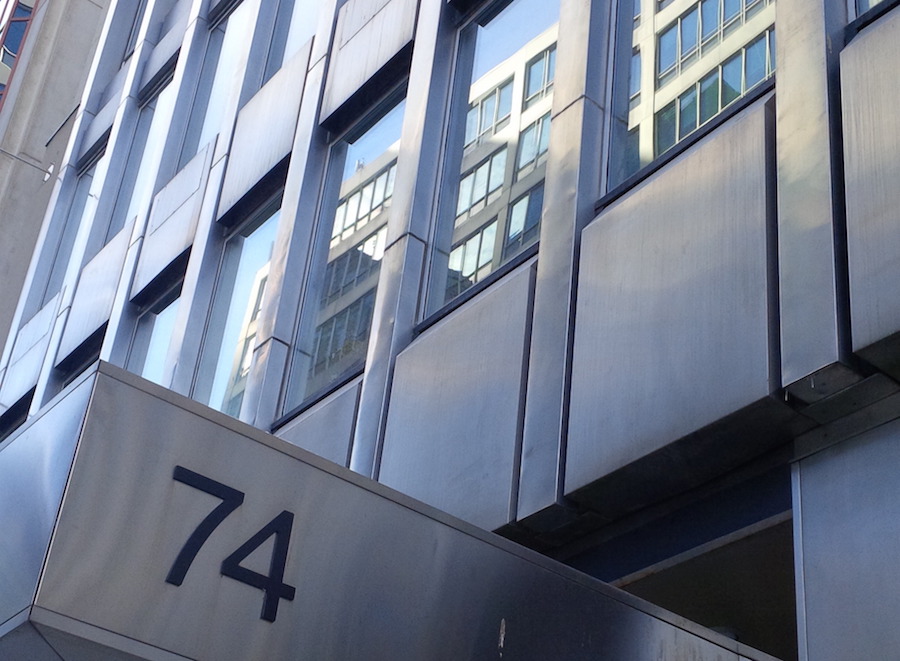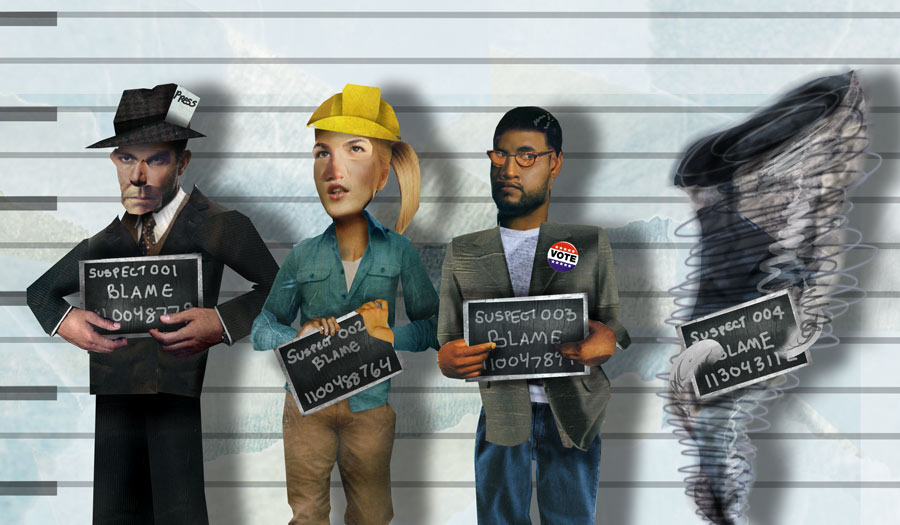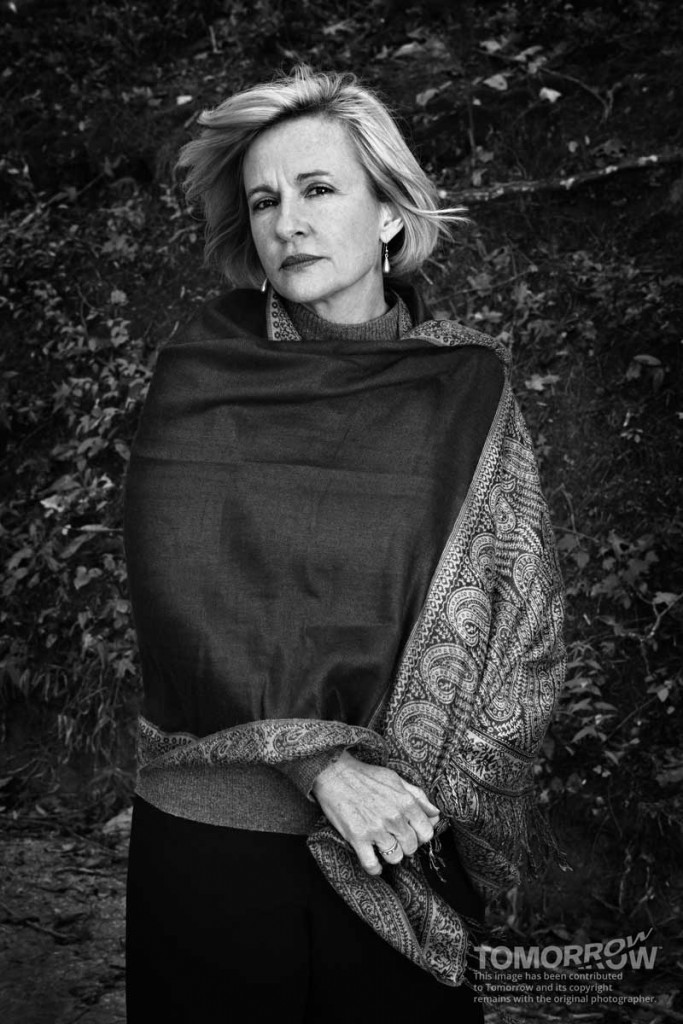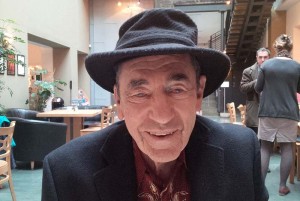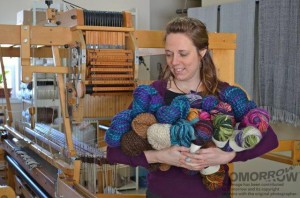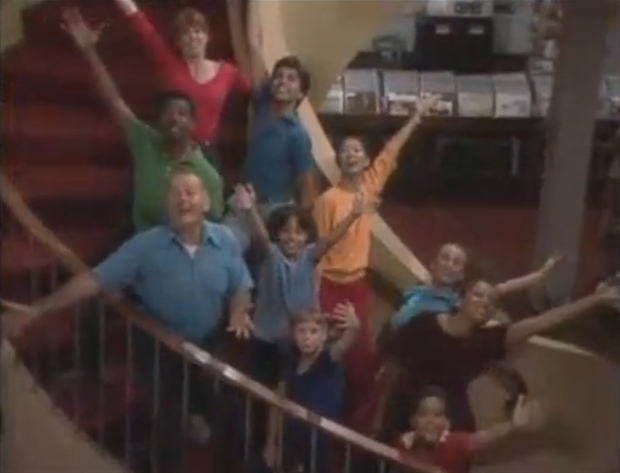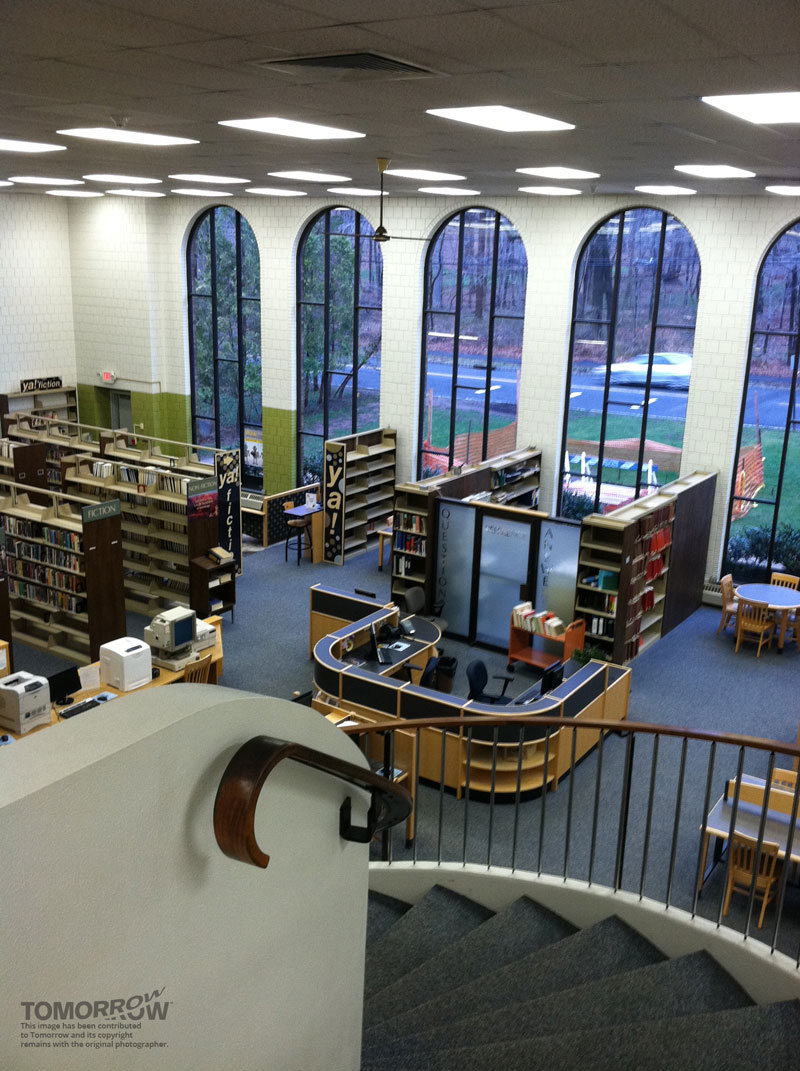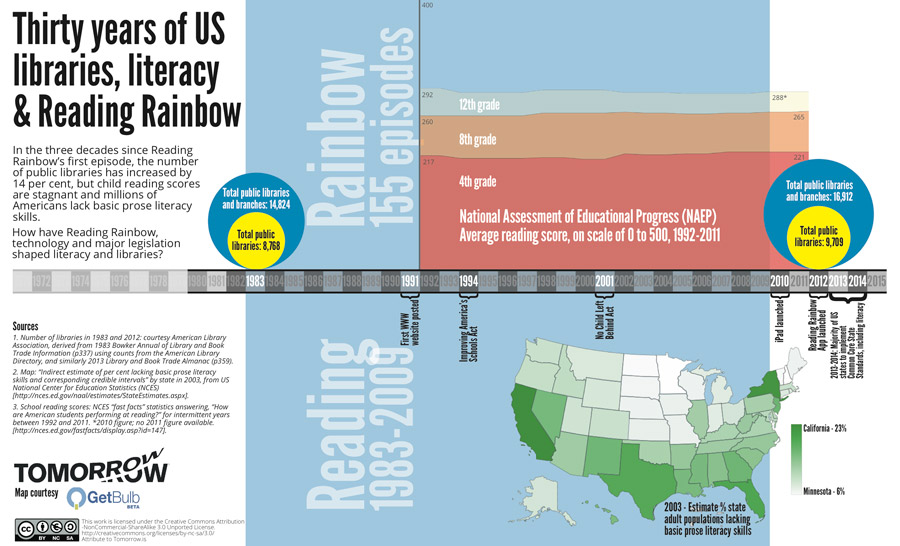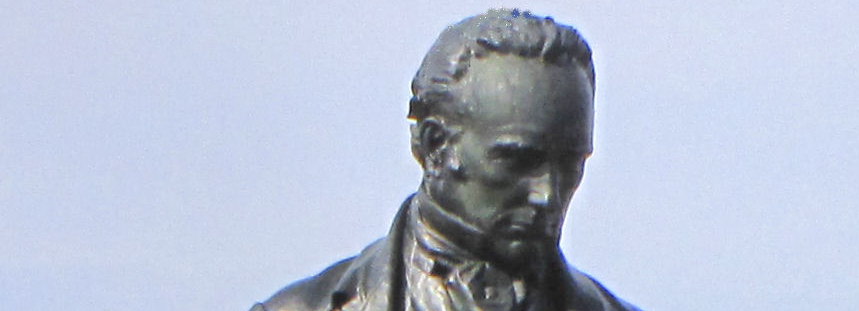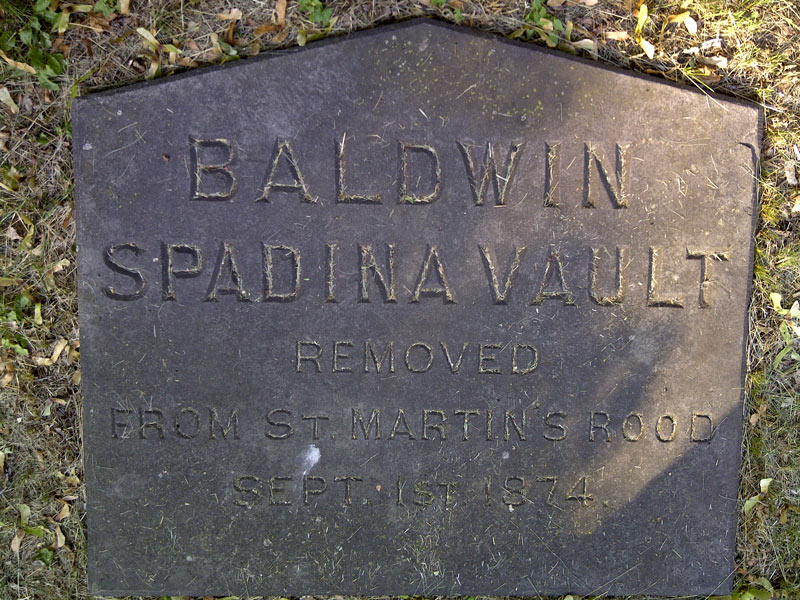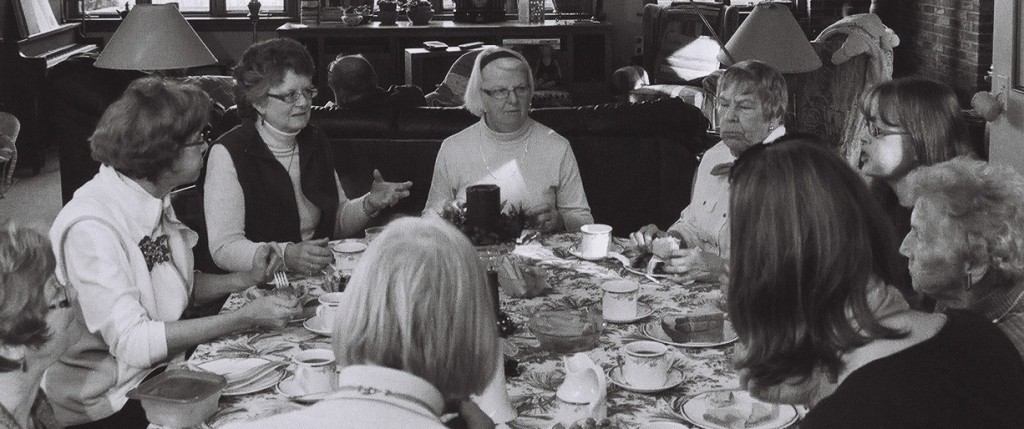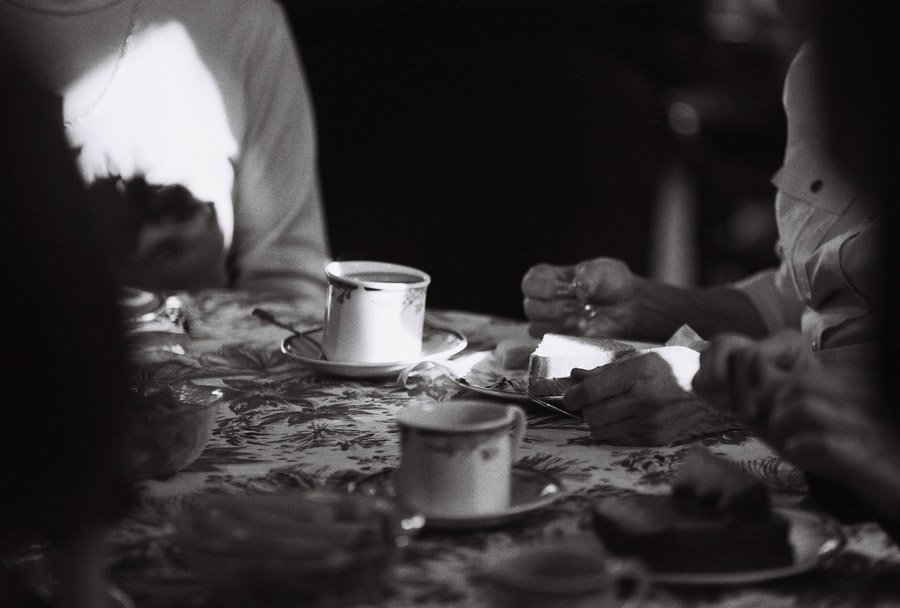Waiting. Waiting. Watching seconds pass. Time drifts on, seeming to drag.
In a world of noise, waiting for 168 seconds of silence to end becomes uncomfortable.
And it’s meant to be jarring, one second for each person killed in the Oklahoma City bombing of April 19, 1995 at 9.02am Central Time.
Ever since, and again for the 20th anniversary this year, the loss is marked with this distinct timed silence. It is also used before the annual marathon where more than 25,000 runners and the crowd pause for two minutes and 48 seconds.
It is not the longest public memorial silence and by no means alone as pauses have become a default when death is mourned.
But what does a moment of silence mean? Are the moments too short? Does the length of time rank loss? Are these public acts attempts to reclaim quiet and reset the body and mind? And do they actually help to focus groups of people on serious issues and memorials, or make them too easy to avoid?
168 seconds – gone in an instant
“We want people to feel like it takes a long time because that’s the impact of the loss,” said Kari Watkins, executive director of Oklahoma City National Memorial.1
The bombing of the Alfred P Murrah Federal Building claimed 168 lives and injured more than 680 others when a third of the structure was destroyed in an instant, at the time the worst terrorist attack on US soil.
A moment of silence was held a week after the destruction and one second for each life became the standard marker each year. The memorial marathon started in 2001 with 5000 runners and now welcomes 25,000, with the silence at the starting line.
Ms Watkins said they don’t apologise for the length of the silence – it is a large number and it takes time to mark it.
“We felt pretty strongly about making sure people didn’t just sit there,” she told Tomorrow by phone. “You get a little uneasy at the two-and-a-half minute mark, thinking, ‘When is this going to end’ or ‘what is taking so long’. It’s not comfortable. It feels like it takes forever.
“I think people are always surprised at the length of it. You see people start to fidget towards the end – I mean gosh, 168 seconds, people say that it takes so long. Well, if you have a second for each life, that’s 168 seconds – there’s no other way to do it. The biggest part we work on is making sure that people understand that those are a lot of lives. Two or three are too many. 168 are. . . so we just make sure people understand the length and the depth of it.”
Sometimes noise might mark the end of the silence at the race, such as applause or bells or a dignitary speaking, said Ms Watkins. A baby’s cries broke the silence during the first anniversary at the memorial in 1996.2
“The silence just marks a pause, a stop, to remember, to reflect and to look at where we are today and where we’ve been,” added Ms Watkins.
[Tweet ““The silence just marks a pause, a stop, to remember, to reflect and to look at where we are””]
Individuals can mark a moment of silence in the memorial site to the Oklahoma City bombing, but Ms Watkins said it is different from when people come together.
“It’s different because you’re more sitting in remembrance in peacefulness. When we do that during the anniversary ceremony, that silence is part of making sure we don’t forget why we’re here. The April 19 mourning is an important time to appreciate the fact that we’ve come this far in 20 years but also just to reflect and remember what we’re doing.
“I think meaning is personal. It’s a very personal thing to everyone who’s in the audience.”
How much time is a life worth?
The month of April also sees a moment of silence for victims of the Rwanda genocide in 1994. With a death toll of 800,000, an equivalent silence would take nine days. Instead, it is just one minute, and it took 10 years before the United Nations General Assembly approved it. According to spokesman Aaron J. Buckley for the UN, about 20 nations mark it.3
Remembrance of the July 7, 2005 bombings in London has received both one-minute and two-minute silences for the deaths of 52 civilians.4 Spain observed five minutes of silence on the first anniversary of the March 11, 2004 Madrid bombing that took 191 lives.5
The 129,000-246,000 estimated deaths caused by the first atomic bombs dropped on Hiroshima and Nagasaki in 1945 get one minute, as do the lives lost during the Warsaw Uprising.6
Remembrance Day ceremonies get two minutes of silence, the historic origins of the idea of public ceremonies pausing to remember loss. But the time for World War I has remained static through the additional losses of World War II and decades of conflict since. An attempt by Democrats in both the House and Senate of the US Congress in 2013 to create a matching two-minute silence for Veterans Day has yet to progress beyond the bill’s tabling.7
The Children’s Memorial at Yad Vashem in Israel is in silence except for names being read out, to acknowledge the loss of young lives during the Holocaust.8 A minute of silence is recognised by Israelis annual on Yom HaShoah as sirens blare. But with 6 million murdered in the genocide, which would equate to more than 69 days of silence, can there be a temporal measure of the horrors?
Despite a vast religious history background to concept of silence, its public ceremonial origins are distinctly 20th century.
Before World War I even ended there was pause in Cape Town, South Africa, with a minute to give thanks for the living and a minute for the fallen. Then on May 8, 1919, Australian journalist Edward George Honey, in a letter to the London Evening News, suggested two minutes of silence: “All locomotion should cease, so that, in perfect stillness, the thoughts of everyone may be concentrated on reverent remembrance of the glorious dead.”9
Steven Brown, professor of social and organisational psychology at the University of Leicester,10 said there was a unique problem after the end of World War I with a tremendous loss of life and returning soldiers. And the resulting initial silences weren’t always respectful affairs.
“Historically around this period,” he told Tomorrow by phone, “there was a lot of concern about possible Communist revolutions or Bolshevik revolutions and you had a large demobilised former group of soldiers who might have a legitimate grievance against the state. So there was a big concern to sort of publicly commemorate their sacrifices and efforts and try to bind it together into a story about British identity and British statehood in the aftermath of the first world war.
“A lot of them did involve huge groups of soldiers coming down to London, doing the [two] minutes silence and then getting riotously drunk for the rest of the day. It’s sort of interesting that the silence was part of a package of activities that aren’t always as sombre as we think of it.”
Prof Brown said moments of silence, because of their religious history, can transport members of the public observing them back to a faith experience even if they are not themselves religious. But silence, as a public act, may no longer work as effectively as it once did.
“When you see silence at football matches or more often a televised image of a public silence, the previous idea of a city going silent was quite a powerful experience,” said Prof Brown. “In 1919, 1920, the reports of the early silences, the city goes silent for a moment. The idea that you could accomplish silence being performed across a whole country is a technological innovation because you’ve got to have the capacity to make that work as well as synchronising timetables and clocks, which is a comparatively modern invention.
“However, there’s a real difference between stopping where you are and being caught up in your own thoughts, which is how it’s supposed to work, versus standing in a group of people who may or may not be quiet, and you’re sort of caught up in the experience of monitoring other people’s silence.
“And that’s really heightened when you have video screens at football matches where the camera will be panning around capturing how sad the players are looking on the pitch.
“It’s far more performative. It was never not performative but the performative aspect of it has been very much intensified by the introduction of media and particularly broadcast media, live streaming and playing it back to the people who are participating in the silence. [That] makes it a very different kind of experience than it was before.”
[Tweet “”You’re sort of caught up in the experience of monitoring other people’s silence””]
Prof Brown said silence in a small group, say for a work colleague who has died, can be very powerful because of the pre-existing relationships between people and the space where the pause is taking place. But most public silences lack those connections, sometimes without a lead in or lead out of the silence to put it in context. Combine that with monitoring behaviour of those on screen or around you and there of questions about what is an acceptable silence and behaviour during it, and how do you police that.
In 2008 there was a dispute over how best to honour the 50th anniversary of the Munich air crash when Manchester City wanted to use a minute of applause but Manchester United, whom they were facing, voted for silence.11
“My purely personal view,” said Prof Brown, “as a structured activity that we might engage in which does some work of binding us together as a collective, I don’t think [silence] works terribly well for these big occasions. It seems to me a technology that has been dislocated from its origins and is inappropriately applied. There might be better ways of doing things.
“It’s particularly acute with a minute’s silence. A minute is usually a token marker of respect and it’s a tricky one to manage because it’s not quite long enough for anything meaningful to happen and the start and end of silences are a bit messy usually as well. It takes a while for people to get into gear.
“The two-minute silence in the UK at least is the war silence because it’s come out of that Armistice Day roots. To stand silent for three or four minutes is very tricky and it risks all kinds of difficulties of trying to police that length of silence. But [those lengths] have often been used on occasions where you don’t necessarily want to use a war silence but you want something that’s more significant than a one-minute silence.”
He continued: “In terms of every significant either public tragedy or conflict, there is always a kind of a weighing up and a making distinctive of the event and that’s quite understandable. If you are involved in commemorating an event, you want something of its uniqueness to pass into it.
“As with applying a calculus to any kind of tragedy, the downside of that is, no amount of silence is ever going to be enough. The minute you treat what is fundamentally a difficult qualitative problem in quantitative terms, it’s always going to be unsuccessful to some extent.”
Prof Brown suggested looking to physical memorials for examples of ways to move toward more meaningful ways to get the public to remember and learn. Silence has become an almost “instinctive response” to events. Doing something else is less easy.
“The nature of public commemoration itself and how modern western societies do commemorative work has shifted dramatically in the past 30-40 years,” he said. “It’s partly being driven by things like Holocaust memorials which have sort of thrown up all sorts of interesting problems about how you balance the tension between events that you want to project into the future in perpetuity, things that we should never forget, but at the same time how not to create a future that’s entirely dominated by the historical.
“How can you represent or do justice to things that are thought to be utterly unrepresentable? So the quantitative solution: if we make it distinctive either through the amount of time we spend in silence or we make it distinctive through the amount of money we spend on the memorial, if you play that game, it’s quite unsatisfactory.
“And the alternative solution, particularly around Holocaust memorials and to some extent with the 7/7 memorial in Hyde Park for the 2005 London bombing, and to a certain extent some aspects of the 9/11 memorial in New York and most certainly the Holocaust memorial in the centre of Berlin, what you notice about them is that they are non-representational spaces to some extent. They are quite peculiar spaces where through manipulating various architectural codes the idea is to create an experience for the visitor and set up a kind of experiential puzzle. What is it I feel about this event?

Memorial to the Murdered Jews of Europe, Berlin, Germany. Photo by Tristan Stewart-Robertson. Creative Commons Attribution-NonCommercial 4.0 International License
“The fact that it’s not easy, you have to work it through for yourself. There is an architectural tradition now of thinking, that’s the best way we can commemorate, by inviting people to think about what this means without programming the nature of what it ought to be. This is important for you to think about but we’re not going to tell you necessarily how to think about it.
“You can see within the silence there is some of that idea because it’s meant to be a space for private reflection. But that space of private reflection, at least my argument would be, has been lost because of the changing social conditions in which it’s enacted. There is far more interesting stuff to be done in exploring these sort of non-representational spaces of commemoration.”
Disorientating or calming silence
The 1952 three-movement piece 4’33”12 by American experimental composer John Cage was meant to redefine what is sound and music. Pure silence is nearly impossible to find on earth.
That is, except in places such as the Anechoic Test Chamber at Orfield Laboratories in Minneapolis, in the US state of Minnesota. Given the Guinness World Record on October 18, 201213 as the quietest room in the world, the company’s founder and director Steve Orfield said it takes $100,000 worth of equipment to measure the silence.
“Although we could record it, if you played it accurately, no-one could hear it or even come close to hearing it. The broadcast systems couldn’t handle it.”
In the anechoic chamber, Mr Orfield recommends a person doesn’t speak and the lights are off, and so you begin to hear your own body, from lungs inflating and deflating to the heart beating, your joints moving and buzzing in your ears.
“It usually makes them nervous and they’re usually not hearing the space at all,” he told Tomorrow by phone. “You’re used to walking through space and hearing your feet move and hearing the reflection of your voice on the walls and that’s all gone. You’re not hearing your own voice and you’re in the dark so you don’t have any visual cues to counteract the lack of any acoustical cues.
“You tend to lose your balance, you can tend to feel claustrophobic. You always feel like there’s pressure on your ears because what there really is is a lack of pressure on your ears. So you’ll feel that there’s not enough things going on surrounding you to be in the real world. Some people like that, some people find it extremely uncomfortable.”
The anechoic chamber is used to test products that are quiet or do experiments with sensory deprivation. That can be used for therapeutic purposes, said Mr Orfield, effectively resetting an individual’s ears.
But you don’t need a chamber for that – going for a walk in the woods, where there is reduced stimulus or the stimulus such as rustling leaves is pleasant, can be calming.
“Most everybody has the experience of being able to be reset and to become more peaceful in natural environments,” he said. “You don’t find populations who don’t enjoy that experience. But you find people who aren’t getting that experience much.”
In February, the World Health Organisation recommended that people should not listen to more than one hour a day of music14. They warned 1.1 billion teenagers and young adults were at risk of permanent hearing damage.
Mr Orfield said you might be the same as your parents or grandparents, but by dosing yourself with higher levels of media, your perception of noise and silence changes. And then it becomes harder to settle yourself away from noise.
“People may like loud music,” he explained, “but it doesn’t settle them down. Their heart rate is faster, their blood pressure is higher, their physiological response to loud sound, even if it’s stuff they intend to listen to, it’s clear – their body is being affected by it.
“The meditation movement around the United States is extremely supportive in the notion that people find peace, they find all kinds of measured physiological changes when they take themselves out of noise.
“And it’s true in multiple domains. If you’re in a bright city and you go out into the darkness of the countryside, that calms you down. If you’re in windy area and you go to a calm area, it calms you down. You can be stimulated and cross-stimulated in a whole series of modalities and the dominate stimulation is the one you’ll focus on. And if you bring the background perceptual noises down to a large degree, you’re settling people out.
“If you’re in the real world, you’re never settling out to the point of real silence in any of the domains but you’re settling into an area of perceptual comfort.
“The anechoic chamber is an extreme, but reasonable levels of silence tend to cause people relaxation, to be more reflective, to have things occur to them mentally that wouldn’t in noise.
“The introspection that people have when they’re not in high levels of stimulus tend to be useful, and that’s what meditation plays off of. Many people believe that they’re kind of displaced to an entirely different experience when they’re doing that and I think that’s true.
“A lot of the physiological measurements of people who are meditating and a lot of the neurological measurements of people who are meditating show that there’s not only relaxation but things are happening in different places in their brains.”
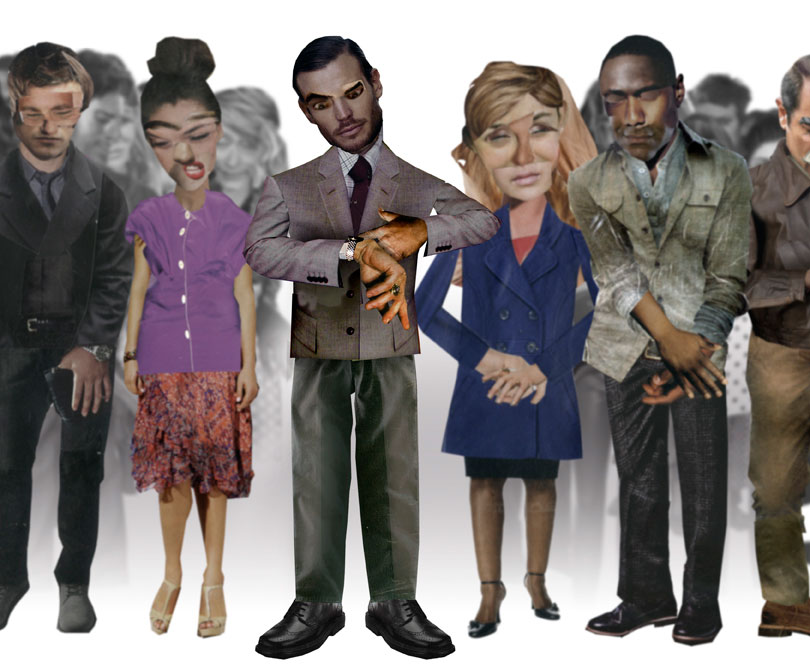
Silent Times, by Jason Skinner, artist in residence. Creative Commons Attribution-NonCommercial 4.0 International License
Spoken prayer or silent reflection?
World religions have a long association with silence – but is it always appropriate? In 2014, the town council of Brampton, Ontario, Canada, voted to stop reading the Christian Lord’s Prayer before meetings in favour of a non-denominational statement. Some public outrage and a petition of 5000 signatories ensued and an eventual compromise resulted in a moment of silence.15 For campaigners, that silence is in mourning at the loss of the spoken prayer.
Susanne Guenther, of the town’s Salvation Army and the voice who founded the online petition, told Tomorrow by phone that the Lord’s Prayer “never hurt this country in any way shape or form” and its loss was “tragic”. She argued the prayer remained suitable in a diverse society because it became diverse under the umbrella of Christianity.
“To say we’re going to have a moment of silence,” she said, “is what we say when we’re remembering those who fought for us on Remembrance Day, when we’re mourning a certain event – that’s what a moment of silence is, was meant for, right? If you look it up in any kind of a dictionary or something, that’s the definition you’ll find. I view it [as a] better replacement than saying some sort of generic text that they were using.”
Ms Guenther said basic values such as empathy and forgiveness are missing from much of society but present in the Lord’s Prayer, a “corporate prayer” that “encompasses everything that is really good and helpful to all – it really doesn’t exclude anyone or any faith or any person at all”.
“There’s no other non-denominational prayer that could be worded as perfectly as it’s already been done,” she continued. “And we’ve been using it for over 100 years. This country has flourished under the faith that it embraced when it first began. It is the reason why so many people come here.”
A corporate prayer is when two or more people are gathered, and “there is power in that”.
“When we pray silently for ourselves, things that are kept in quiet are usually more self-centred, not as broad – it can go either way, but the whole point of saying a corporate prayer is the agreement that people can come to and join their hearts and minds in to some words that they all agree are something that we’re sort of giving up,” said Ms Guenther.
“The whole aspect of prayer is first of all the notion that there is a higher power. It’s not people of other faiths that had a problem saying the Lord’s Prayer. It’s really those that don’t believe that there is a higher power in the first place that found it redundant to corporately agree on some very basic things that just sort of make living in this society more safe, more harmonious, more kind towards one another and all that.”
The tension between spoken and silent prayer, as well as its timing and duration, has endured within faiths and caused marked splits between denominations.
Chapter 73 of the Qur’an recommends that the best time for a voluntary silent prayer – the Tahajjud – is in the early hours before dawn, when the world is quiet.
It reads: “Indeed, the hours of the night are more effective for concurrence [of heart and tongue] and more suitable for words.
“Indeed, for you by day is prolonged occupation.”16
Evelyn Underhill was a 20th century prolific writer, self-educated scholar of Christian mysticism, an active leader in the retreat movement and later pacifist. In her last book, Worship, published in 1941, she examined the difference between corporate prayer – said to and/or by a congregation – and personal prayer.
She said the worshipping life of a Christian was “profoundly personal”, but as a “member of a group”:
“The corporate life of worship has therefore an importance far exceeding the personal salvation or blessedness of the individual worshippers, or the devotional opportunity which it gives to them.
“Moreover the personal relation to God of the individual – his inner life – is guaranteed and kept in health by his social relation to the organism, the spiritual society, the Church. What is best for the All, as Plato says, turns out best for him too.
“Corporate and personal worship, though in practice one commonly tends to take precedence of the other, should complete, reinforce, and check each other.”17
Underhill also wrote that Quaker worship was a “demand for a personal religious sincerity so drastic that no word may be said or sung which is not true for each individual worshipper”. The positive side of that, said Underhill, was as a “noble experiment in corporate contemplative prayer”.
She continued:
“Quaker worship is a powerful corrective of those faults to which Christian institutionalism has always been specially inclined: the tendency to ritualism and to formalism, to emphasize expressive worship, neglect the interior prayer which should inform it, and be satisfied with the routine exercises of the organized cult. It keeps alive the charismatic strain; that docile and realistic waiting upon the Spirit which was central to the life of the Primative Church, but sank more and more into the background with its development.
“It points past all signs and symbols to the Invisible Holy, and perpetually reminds us of the awe and humility, the pause, the hush, the deliberate break with succession, with which man should approach the great experience of communion with the living God.”18
The Evelyn Underhill Association19 has been hosting an Annual Day of Quiet Reflection since 1990, each June near the anniversary of her death, where up to 20 people join together in silence at Washington National Cathedral. Plenty of activity might be going on around the group but they have lengthy periods of quiet of 45 minutes to an hour throughout the day.
Kathleen Staudt, secretary and treasurer of the association, said the difference between spoken and silent prayer is often down to the temperament of the individual.
“Some people are drawn to words and some people are more drawn to silence,” she told Tomorrow by FaceTime. “We certainly have people who come to the Underhill day who would describe themselves as deep contemplatives. They even spend a lot of their time on their own in solitary silence and sharing that with others is part of that experience.
“I’m a word person. But I find the silent times freeing cause they allow me to be in a deeper place where I can leave words behind. But liturgical prayer can sometimes have that effect, particularly if they’re such familiar words that it’s almost like a chant. You’re not necessarily paying attention to the meaning of the words, or the meaning of the words can also direct your prayer – that can sometimes be helpful when you don’t know what you have to say.
“Being silent in a community means that you are aware of people around you. There is a sense that maybe everybody is in conversation with the same god, even if our language wouldn’t be the same about that.”
Two minutes of silence and a full day share an intention of bringing people together. But Ms Staudt said there was also a “real yearning” for silence, not just as a “refuge from the brokenness” but to find healing and deepen compassion.
It’s a mix of people who attend the quiet days, explained Ms Staudt, but the silence is what’s shared in common, even if some might sit, or walk around or read, and to escape the “busy-ness” of the world. Short periods of silence can work, but don’t usually allow enough time to adjust.
“It is where everyone feels at home,” she said. “That’s what people always comment on, the richness of the shared silence is something that is spiritually nourishing.
“Five minutes seems like a long time for people who aren’t used to silence, and a very frustratingly short time for people who are.
“It takes time to settle in, get used to where your body is, and to decide how you’re going to be in the silence. There’s something about the sense of open time that makes you feel like you’re completely out of your usual life. It’s just such a different thing from what we’re mostly used to, to be in silence with a community. It just takes you into another dimension of experience.”
Remember forward
Public moments of silence are held at the same times every year, as calendars cycle around to past anchors. Time takes a broader meaning in Aboriginal Australia, where events in the past hold life-defining lessons for the future.
Willy Stevens is an Aboriginal research and astronomer at Sydney Observatory and liaison between the University of New South Wales and Sydney Observatory.20 He said western culture, particularly in the realm of astronomy, can learn a great deal from indigenous lessons.
“The position of certain stars are going to tell us what time of year we could go hunting for a certain animal or go fetching eggs from a type of bird and such,” he explained to Tomorrow by phone.
“We’re nomadic in our culture, we move along the land with the seasons, so it’s part of our culture to move where the season is going to determine us to go next.
“We don’t exactly have days in the month as such, it’s more dry season’s coming, wet season’s coming and such. When we know those seasons are coming, we are preparing ourselves for them. So that’s why we would move to different locations where it would be suited for us to survive.
“The way that we approach the cycle is determining where we are going to be living, in particular areas. We might not even stay within our own country – we might go into another Aboriginal country with their permission.
“It’s all about preparation in our culture – we’re always preparing ourselves for changes. That’s how we learn from past events.”
When 20 countries in the world cycle back to the annual minute of silence for the victims of the Rwanda genocide, it is not intended to be just 60 seconds. The title of the globally approved day is “International Day of Reflection”.
Even then, it’s not just a question of the length of time you intend to consider a subject, possibly in silence, but what you’re used to.
Steve Orfield said the anechoic chamber and silence generally has different effects on people.
“For example,” he said, “if you’re a person who goes to church and you go to a large church and if that’s habitual, then fairly quickly after you sit down you begin to have the experience of that kind of silence. If you’re a meditator, within five or 10 minutes you could be in a meditative state.
“It has a lot to do with whether you’re trying to move toward it or whether you’re trying to fight it. So many people are trying to fight it. So many people cannot tolerate silence because they’re so addicted to noise.”
The Evelyn Underhill Day of Quiet Reflection is meant to creating a mini experience of the monastic lifestyle, once so common, said Kathleen Staudt.
“It’s about entering the silence that’s waiting for you,” she explained. “It’s not about what you’re not doing, it’s about what you’re making yourself available to. It’s not that you’re not speaking to each other, though you’re not, it’s that you’re making yourself available to something greater than each other, but that each other is experiencing.”
Prof Steven Brown said silences can have a completeness that can become dismissive – silence marked, let’s move on. But memory doesn’t work like that.
“By its very nature, [a moment of silence] emphasises that there’ll be a start and there’ll be a conclusion to that particular bit of our reflection,” he said. “And that’s very different to saying, ‘Well, this is something actually where we need to treat this as an ongoing matter of reflection’.
“In saying that we shouldn’t use silence, that’s not saying that we shouldn’t be respectful or we shouldn’t commemorate at all. It’s that when we think about how we commemorate, it’s a live, ongoing problem.
“That’s what commemoration means, to see the past as not something that’s sorted out, but something we need to keep thinking about in the present. Exploring the possibilities of practices or monumental forms that say to us, ‘This isn’t done, you need to keep thinking about this’ really is the most respectful position to adopt with that.”
Kari Watkins in Oklahoma said the museum, memorials, marathons and all the other activities are meant not just to look back to the past, but to understand the impact and senselessness of violence. There is “job to do” to remember the past and ensure the memorial space remains relevant to future generations.
“Silence is so rare,” she told Tomorrow. “Just think about how bombarded we are with messaging today. And silence is so rare that I think people are amazed that we can do it.
[Tweet “”And silence is so rare that I think people are amazed that we can do it.””]
“The anniversary doesn’t really surprise me as much as the marathon – you’ve got 25,000 runners who have spent six or eight months being prepared for it and they stop and pause and you watch them do that and you’re like, ‘Oh my gosh’. And then you get their emails or their notes saying that the 168 seconds of silence is one of the most powerful things [they’ve] ever done.
“When you’re on that stage and you look across the faces that have lost so much, that 168 seconds is a long time.
“When you hear their names called and you see the pain still on their faces 20 years [on], even though they may have moved on and done remarkable things in the past two decades or been a great help to the community to rebuild, that loss is still there.
“No silence, no void, no action is going to take away that loss. It’s so personal to so many, you realise that, how I interpret it and how you may interpret it will be two different things.”
- https://oklahomacitynationalmemorial.org/ ↩
- Report of first anniversary. ↩
- United Nations General Assembly adopted resolution A/RES/58/234, without a vote, on December 23, 2003. UN page for International Day of Reflection. ↩
- Two minutes was marked a week after the attack in 2005 and in 2006 and one minute two days after the attack and in 2013. ↩
- Madrid anniversary. ↩
- Hiroshima and Warsaw memorials. ↩
- Democrats introduced the Veterans Day Moment of Silence Act to the House for two minutes silence at 2.11pm Eastern on November 11, and the Senate for two minutes silence at 3pm on Memorial Day. The House version made it to sub-committee stage. ↩
- http://www.yadvashem.org/ ↩
- BBC backgrounder on silence origins, referenced by the Imperial War Museum. ↩
- Prof Steven Brown university profile. ↩
- Manchester United statement from 2008. ↩
- https://www.youtube.com/watch?v=zY7UK-6aaNA ↩
- http://www.orfieldlabs.com and http://www.guinnessworldrecords.com/world-records/quietest-place ↩
- http://www.who.int/pbd/deafness/activities/MLS/en/ ↩
- The original petition can be found here and in a statement after the moment of silence was imposed, Ms Guenther wrote that silence was “Very fitting considering that a moment of silence is used as a gesture of respect, particularly in mourning for those who have died recently, or as part of a tragic historical event. The loss of our Canadian heritage of 133 years is a tragic historical event; and at least at every Council meeting it will be given the respect it deserves.” ↩
- http://quran.com/73 ↩
- Underhill, Evelyn, “Worship”, James Nisbet and Co Ltd, first published 1936, p83-84. ↩
- Ibid p311. ↩
- http://www.evelynunderhill.org ↩
- UNSW indigenous astronomy team. ↩

